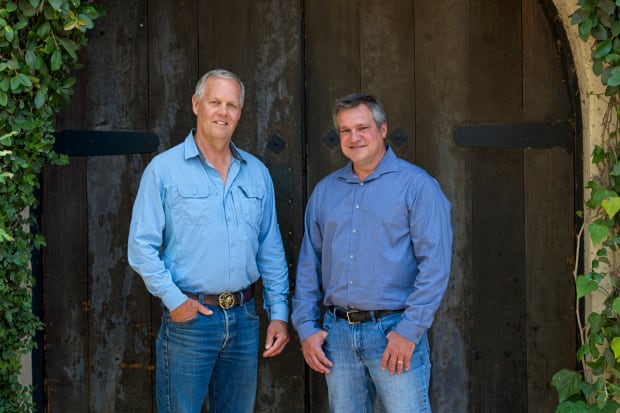Stag’s Leap Wine Cellars, the famous Napa winery that put “newcomer” California wines on the world map by besting top Bordeaux houses (ahem…Château Mouton-Rothschild and Château Haut-Brion) at the 1976 Judgement of Paris is converting its S.L.V. and FAY estate vineyards to certified organic by 2024.
Napa Valley wasn’t always the world famous wine region it is today. The Judgement of Paris changed all that and inspired the 2008 film Bottle Shock, a fun romp depicting Napa’s early days as the Wild West of California winemaking.
Made from three year old vines, the infamous 1973 Stag’s Leap Wine Cellars S.L.V. Cabernet Sauvignon defeated France’s greatest Bordeaux wines. Proving that history can be changed, winning this competition secured Napa Valley’s position as a premiere wine region for Cabernet Sauvignon. Lucky for us, bottles of the legendary 1973 Stag’s Leap Cab are still to be found, also for a legendary price around $12,300.
Wondering if it matters if your wine is organic and what that actually means? It just so happens to be a topic near and dear to our hearts. First find out more about the process — read A Wine Lover’s Dream, Bordeaux’s Organic and Biodynamic Renaissance, and this fascinating account of Acclaimed French Winemaker Gérard Bertrand’s Biodynamic Approach to the Art of Life. Then we’ll help you meet your new favorite organic wine with 9 Oh-So-Lux Organic Wines to Add to Your 2023 List, and 8 Best Summer Wines to Catch That Perfect Vibe, and 85 Delicious ‘No Headache’ Organic Wines.
Certified Organic to Preserve Historic Vineyards
Photo courtesy of Stag’s Leap Wine Cellars
Today, Stag’s Leap Wine Cellars’ winemaker Marcus Notaro together with Vineyard Director Kirk Grace are committed to preserving its legacy and historic vineyards by converting one hundred percent to certified organic farming practices. Converting to certified organic is a team effort between the vineyard director, vineyard manager, and viticulturist. Together they focus on the soil health of the vineyards with integrated pest management. This includes cover crops, owl and bluebird boxes, bio fungicides, and the introduction of beneficial insects – all to benefit soil microbiology.
“Our impact on the environment doesn’t stop at the fence line,” says Grace. “What we do in our vineyards has an impact downstream. We have to be good neighbors and good stewards of the land and we want to do the right thing for our grapes, our workers, our consumers, and the planet.” Grace is betting on extended vineyard longevity to offset the conversion and annual costs of farming organically; while Notaro is also banking on high quality grapes. “When the soils and the vines are healthy, Grace asserts, “the wine tastes better.”
Want more on all things organic? Never miss an article, sign up for our newsletter .
Stewardship of the Land is Paramount to Stag’s Leap Wine Cellars

Photo courtesy of Stag’s Leap Wine Cellars
Sustainability isn’t new to Stag’s Leap Wine Cellars. It received both the Napa Green Winery and Napa Green Land certification in 2010, and is Fish Friendly Farming Certified. Committed to conscious choices every step of the way and building a truly healthy ecosystem Stag’s Leap Wine Cellars bring on the sheep rather than use a till or chemicals. The sheep graze on the weeds and (yes, naturally) fertilize the soil, which limits carbon emissions from the vineyards. Watershed and habitat restoration is also key, including restoring Chase Creek, the Napa River tributary that runs through the historic S.L.V. and FAY Vineyards.
While Notaro and Grace generally agree balancing the happiness of the vines versus stressing them – just like in fine wine the right amount of tension produces a delicious result. While the pair occasionally creatively wrangle over perspectives on best practices in the vineyards, “The relationship between the vineyard manager and winemaker is critical to farming the best grapes for the season,” Notaro says. “We both have the common goal in producing a great wine expressive of our vineyards, but of course can have different perspectives at times. Farming wine grapes is unique in agriculture. We aren’t just shooting for ‘maximum production.”
Have you tried organic wines? Let us know your favorites in the comments below!
Here’s Your Excuse to Visit This Historic Vineyard

Photo courtesy of Stag’s Leap Wine Cellars
Today, wine lovers flock to the tasting room and vineyards to enjoy the latest vintages from its history-making vineyards that permanently put Napa Cabernet Sauvignon on the map. You’re invited to get up close and personal and rub elbows with the winemaking and vineyard team at a multitude of special events. From technical harvest tours to magical three-course winemaker dinners with sunset tastings, bespoke events invoke the senses and create a deep appreciation where the grapes are grown and the wine is made.

Photo courtesy of Stag’s Leap Wine Cellars
A fan favorite is the FAY & S.L.V. New Vintage Release Vineyard Walk & Lunch where guests sip and stroll through the vineyards with scenic tasting stations dotted along the way. Imagine standing in the very vineyard row where the grapes were grown you’re enjoying in your glass. Afterwards a casual yet gourmet chic farm-to-table lunch is served under its magnificent oak tree where you continue to enjoy the latest vintages of FAY and S.L.V. wines.
When it comes to fine wines Notaro says, “It’s an expression very simply ‘of a place.'” That place being the legendary S.L.V. vineyard that forever put Napa Valley wines on the map.
P.S. Did you know? Organic Authority has its own nutrition and wellness shop to meet your needs and help you take control of your health. Shop clean supplements for energy, sleep, inner beauty for skin support, protein, workouts, pantry items and more. Shop The Organic Authority Shop now.
Read More on Organic Authority

Chill Down With 3 Antioxidant-Rich Red Wine Cocktail Recipes
The 411 On The Natural Wine Movement
Do Certified Organic Wines Contain Sulfites?
Source link

